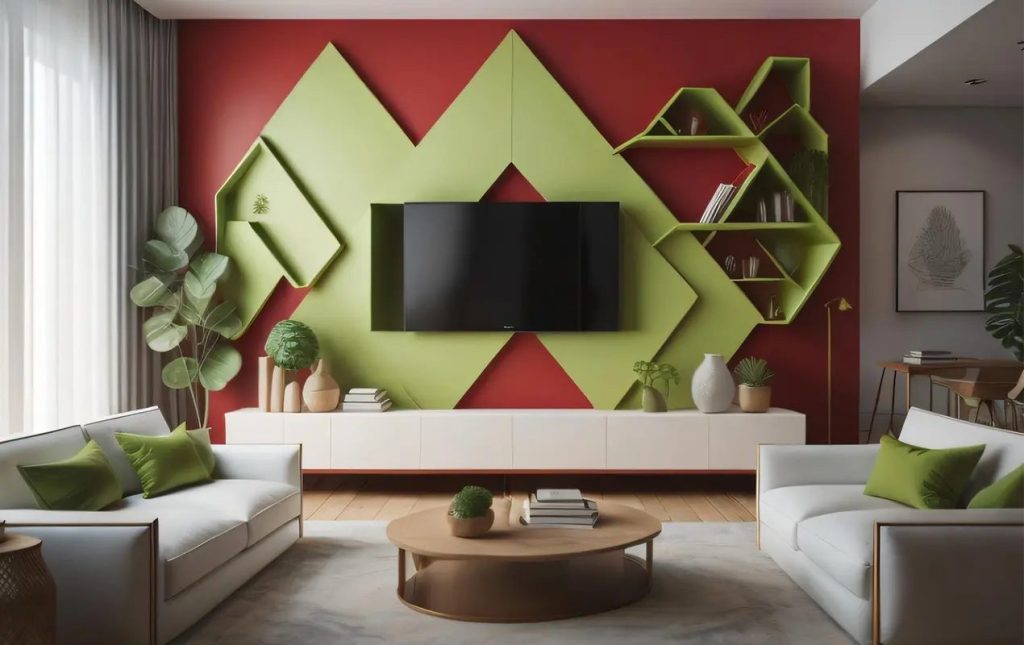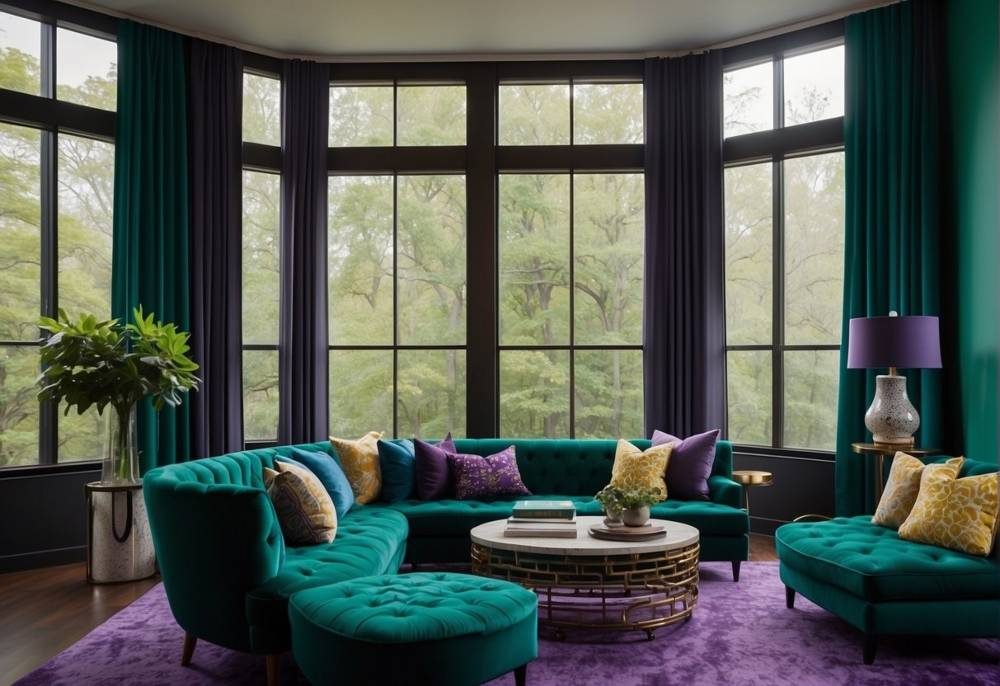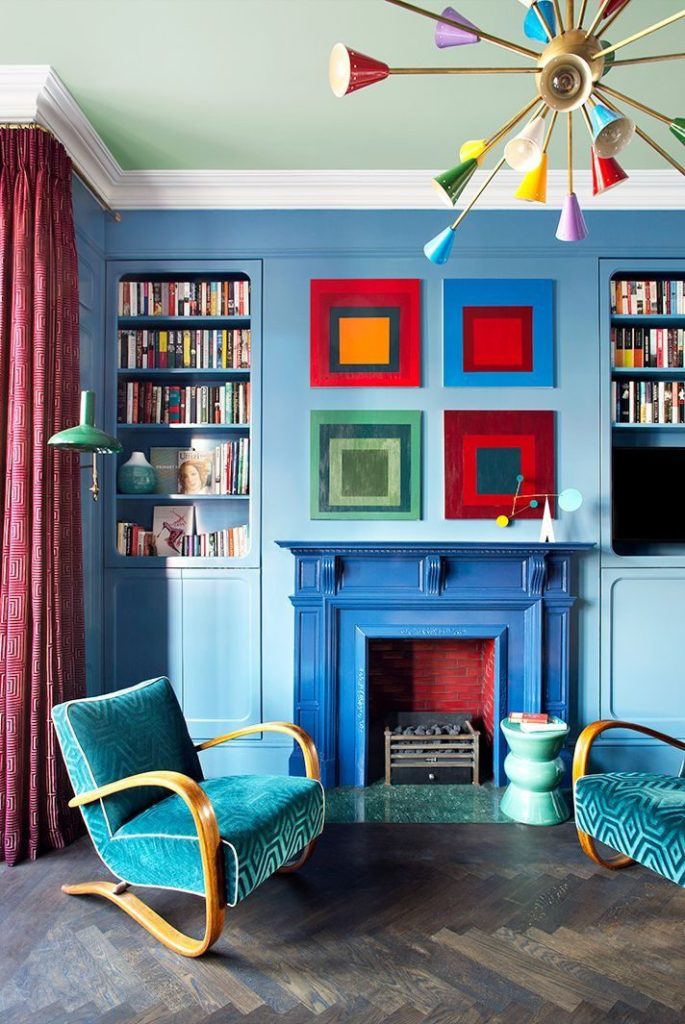Are you tired of staring at monotonous walls and yearning to infuse your living space with personality? The living room, being the heart of every home, deserves a chromatic metamorphosis that reflects your distinctive style and creates an ambiance that’s both welcoming and exhilarating.
Understanding the psychological impact of colors on our mood and well-being, interior designers are increasingly advocating for bold, polychromatic schemes that transcend traditional design boundaries.
In this comprehensive guide, we’ll explore 15 ingenious ways to incorporate color into your living room, from subtle accents to dramatic statements.
Whether you’re a minimalist looking to experiment with pops of color or a maximalist ready to embrace a kaleidoscopic paradise, these ideas will help you create a space that’s both aesthetically pleasing and personally meaningful.
Colorful Living Room Ideas
Let’s dive into these transformative ideas that will revolutionize your living room’s aesthetic appeal while maintaining its functionality and comfort.
1. Bold Accent Wall Magic

An accent wall serves as the perfect canvas for expressing your color confidence without overwhelming the space. Choose deep emerald green, royal blue, or burnt orange to create a focal point that commands attention. The key is to select a shade that complements your existing furniture while adding a layer of sophistication to the room.
The beauty of an accent wall lies in its versatility and impact-to-effort ratio. Consider incorporating textural elements like venetian plaster or contemporary wallpaper patterns to add depth and interest. This approach works particularly well when the remaining walls maintain a neutral palette, allowing the accent wall to truly shine as the room’s centerpiece.
2. Vibrant Upholstery Choices

Transform your living room by introducing furniture pieces upholstered in bold, eye-catching fabrics. A sunshine yellow armchair or a deep purple sofa can instantly become the room’s conversation starter. When selecting colorful furniture, consider the durability of the fabric and how it will withstand daily use.
Mix and match different colored pieces while maintaining a cohesive look by choosing furniture items within the same color family or complementary color scheme. This creates visual interest without causing chaos. Add neutral pieces to balance the bold statements and prevent the space from feeling overwhelming.
3. Colorful Area Rugs

A vibrant area rug can single-handedly revolutionize your living room’s appearance. Opt for geometric patterns in bright colors or traditional designs with a modern color twist. The rug should be proportionate to your room size and furniture arrangement to create a well-balanced space.
Consider layering rugs of different colors and patterns for an eclectic look that adds depth and personality to your space. This approach works especially well in larger rooms where you want to define different functional areas while maintaining a cohesive color story throughout the space.
4. Statement Art Pieces

Large-scale artwork featuring bold colors can transform a plain wall into a gallery-worthy display. Choose pieces that reflect your personal style while incorporating colors that complement your existing décor. Abstract art pieces often work well as they can tie together multiple colors used throughout the room.
Multiple smaller artworks arranged in a gallery wall can create an equally striking effect. Mix different styles and sizes of frames while maintaining a color theme to create a curated look that adds personality and visual interest to your space.
5. Colorful Window Treatments

Window treatments offer an excellent opportunity to introduce color through both fabric and pattern. Consider floor-to-ceiling drapes in rich jewel tones or playful patterns that complement your color scheme. The natural light filtering through colored curtains can create beautiful effects throughout the day.
Layer different window treatments for added interest and functionality. Combine sheer curtains with heavier drapes in coordinating colors to control light while maintaining the desired aesthetic. This approach also allows you to adjust the room’s ambiance throughout the day.
Related Guide: 15 Timeless Rustic Living Room Ideas
6. Paint-Dipped Effect

Create visual interest by incorporating a paint-dipped effect on walls or furniture pieces. This modern technique involves painting the lower portion of walls or furniture items in a contrasting color, creating a striking two-tone effect that adds depth and character to your space.
This technique works particularly well in rooms with high ceilings, as it can help create a more intimate feeling while adding a contemporary edge. Choose colors that complement each other while providing enough contrast to make the effect noticeable.
7. Colored Built-Ins and Shelving

Transform built-in shelving or bookcases by painting the back panels in vibrant colors. This creates an interesting backdrop for displaying books, artwork, and decorative objects. Choose a color that complements your room’s overall scheme while adding visual depth to your storage solutions.
Consider using different colors for different sections of your built-ins to create a playful, contemporary look. This approach works especially well when the front of the shelving remains neutral, allowing your displayed items to stand out against the colored backdrop.
8. Pattern Mix and Match

Don’t be afraid to mix patterns in different colors and scales. Combine floral prints with geometric patterns, stripes with polka dots, or traditional with contemporary designs. The key is to maintain a consistent color palette while varying the scale of patterns to create visual harmony.
Using patterns in both soft furnishings and wall coverings can create a rich, layered look. Balance bold patterns with solid colors to prevent the space from feeling too busy or overwhelming.
9. Jewel-Toned Accents

Incorporate rich jewel tones through smaller decor items like throw pillows, vases, and decorative objects. These deep, saturated colors add sophistication and luxury to any space. Mix different jewel tones together for a maximalist look, or use them as accents against a neutral backdrop.
The key to successfully incorporating jewel tones is understanding their relationship with light. Position these pieces strategically where natural or artificial light can highlight their rich hues. Consider using velvet or silk materials to enhance the luxurious feel of these jewel-toned accessories and create interesting texture variations throughout the space.
10. Natural Elements with Color

Bring in colored natural elements through plants with vibrant foliage or flowers. Consider adding colorful planters or pots to enhance the effect. This approach adds life and organic shapes to your space while maintaining the desired color scheme.
Create layers of natural color by combining plants of different heights and colors. Use decorative branches painted in bright colors, or incorporate preserved flowers in unusual hues to maintain the natural element while adding unexpected pops of color that don’t require maintenance.
11. Colored Lighting Fixtures

Make a statement with colorful pendant lights or table lamps. Choose fixtures in bold hues or with colored glass shades that create interesting light effects. The lighting itself can also be colored through the use of smart bulbs or colored LED strips.
Consider how different colored lights interact with your room’s color scheme during both day and night. Layer your lighting with a mix of colored and neutral fixtures to maintain functionality while adding visual interest. This allows you to create different moods and atmospheres depending on which lights are in use.
12. Statement Ceilings

Don’t forget about the “fifth wall” – your ceiling! Paint it in a bold color or add a dramatic wallpaper pattern to create unexpected visual interest. This works particularly well in rooms with high ceilings or architectural details.
When designing a statement ceiling, consider the room’s natural light and existing color palette. Use lighter shades in rooms with limited natural light to prevent the space from feeling cramped. For rooms with ample lighting, don’t be afraid to experiment with darker hues or complex patterns that draw the eye upward.
Related Guide: 18 Dark Living Room Ideas
13. Color Block Walls

Create geometric patterns on walls using different colors. This modern approach to wall decoration can be achieved through paint or wallpaper and allows for endless creative possibilities in terms of both color combinations and patterns.
The success of color blocking lies in the precision of execution and the careful selection of complementary colors. Consider using colors of similar intensity to create a cohesive look, or experiment with contrasting shades for a more dramatic effect. This technique can also be used to highlight architectural features or create the illusion of them where none exist.
14. Metallic Accents

Incorporate metallic elements in various colors to add shimmer and sophistication. Consider rose gold, copper, or brass accents through furniture pieces, light fixtures, or decorative objects. These metallic touches can serve as a bridge between different colors in your scheme while adding a touch of glamour.
Mix different metallic finishes thoughtfully to create depth and interest. The key is to spread metallic elements throughout the space rather than concentrating them in one area. This creates a sense of flow and helps tie different color schemes together while maintaining a sophisticated appearance.
15. Seasonal Color Rotation

Create a flexible color scheme that can be easily updated with the seasons. Use neutral base pieces and rotate colorful accessories throughout the year to keep your space feeling fresh and current. This approach allows you to experiment with different color combinations without committing to permanent changes.
Develop a storage system for your seasonal decor items and plan your color rotations in advance. Consider creating mood boards for each season to ensure your color choices work well together and maintain a cohesive look throughout the year. This systematic approach to color rotation helps prevent impulse purchases and ensures your space always looks intentionally designed.
Conclusion
Transforming your living room with color doesn’t require a complete overhaul of your space. The key is to start with a clear vision and implement changes gradually, ensuring each addition contributes to your overall design goal.
Whether you choose to make a bold statement with an accent wall or subtly incorporate color through accessories, these 15 ideas provide a solid foundation for creating a vibrant, personalized living space.
Remember that the most successful colorful living rooms reflect the personality of their inhabitants while maintaining a balance between excitement and comfort. Don’t be afraid to experiment and adjust until you find the perfect combination that makes your living room feel like home.

